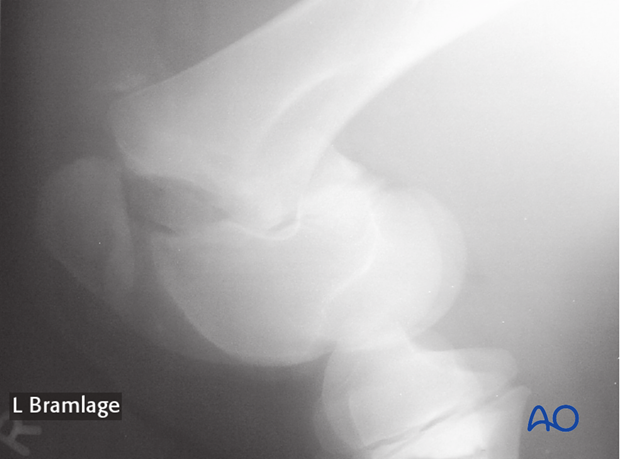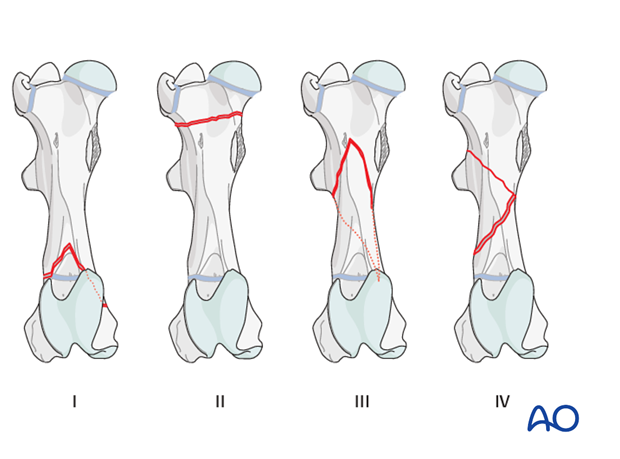Etiology and fracture classification
1. Etiology
Femoral fractures are most commonly diagnosed in foals. They rarely occur in adults, and when they do occur the bone is damaged beyond repair.
Femur fractures most commonly occur when the foal falls on the affected limb. If the foal falls with the limb across his body, in the adducted position, a spiral mid-shaft fracture most commonly results. If the foals foot is trapped in a fence or under an obstacle and the animal subsequently falls with the limb hyperextended, a Salter-Harris type II distal femoral fracture will result.

2. Fracture types overview
Four common fracture types occur in the horse’s femur:
- Salter Harris type II distal femoral physeal fractures.
- Proximal subtrochanteric fractures
- Spiraling mid-diaphyseal fracture
- Comminuted fractures
Salter Harris type I proximal femoral physeal fractures are very rare and they are rarely treated. Therefore these fractures will not be addressed in this module.
In this module, treatment options will be described for Salter Harris type II fractures and spiraling mid-diaphyseal fractures.













